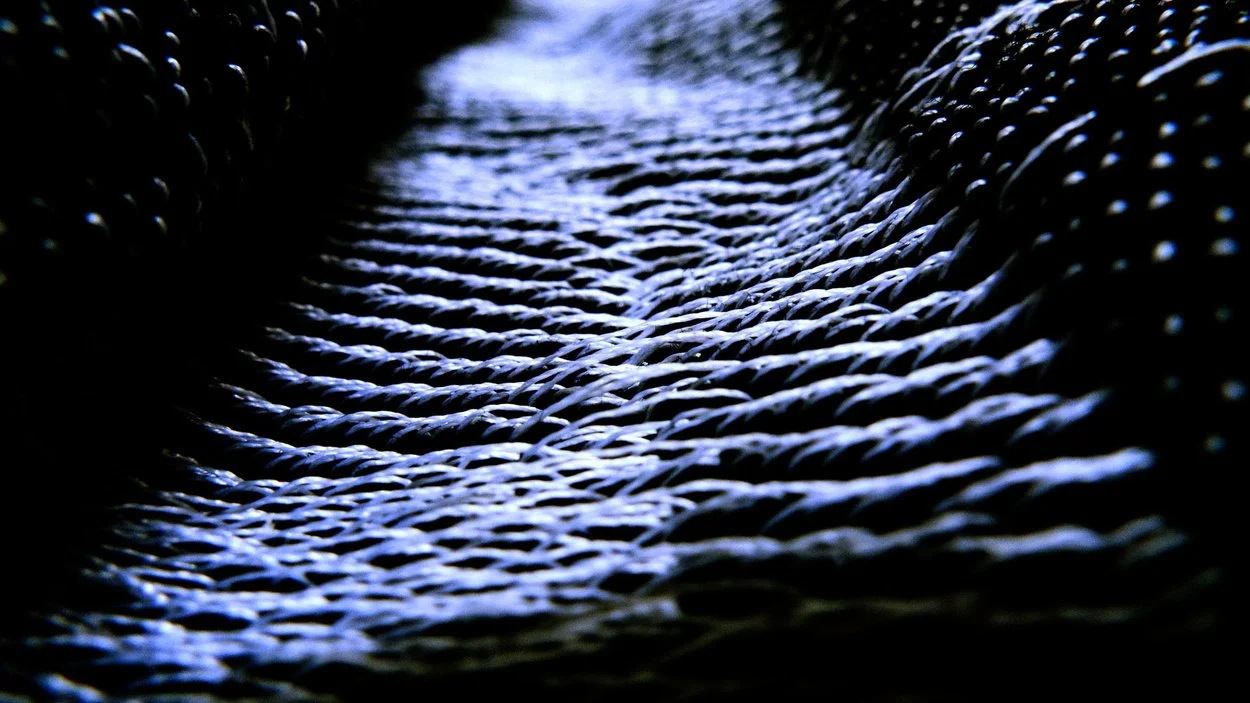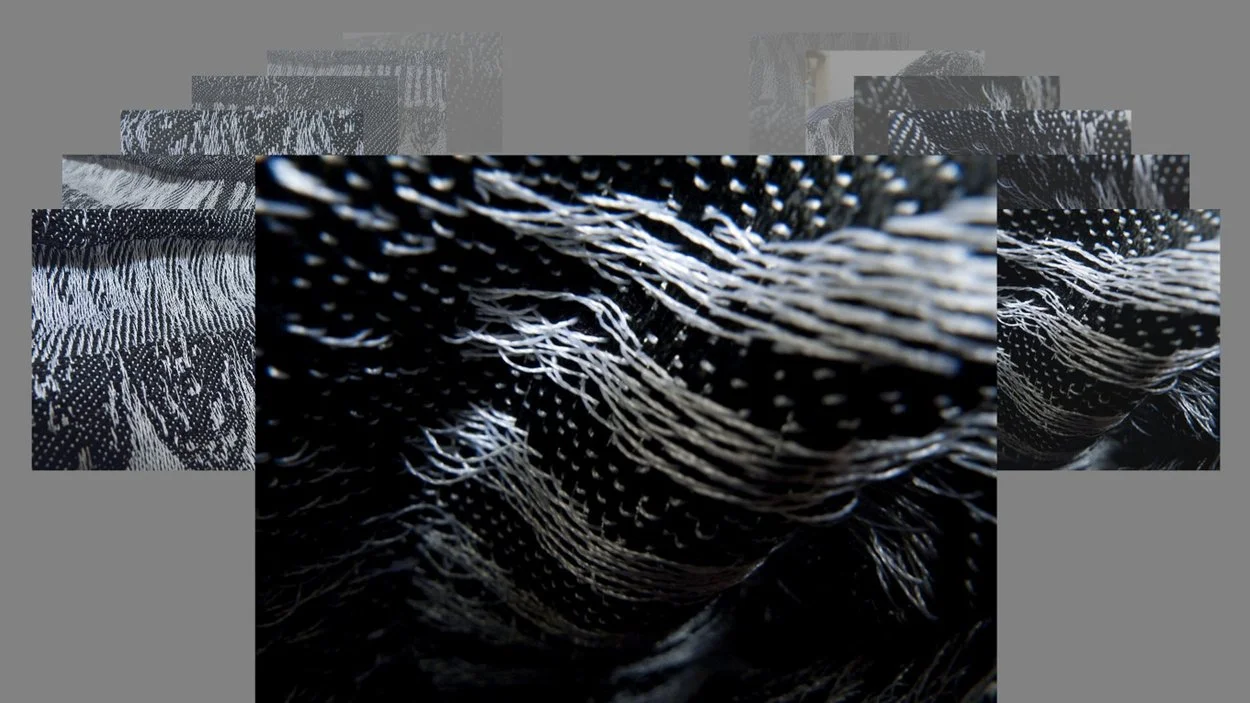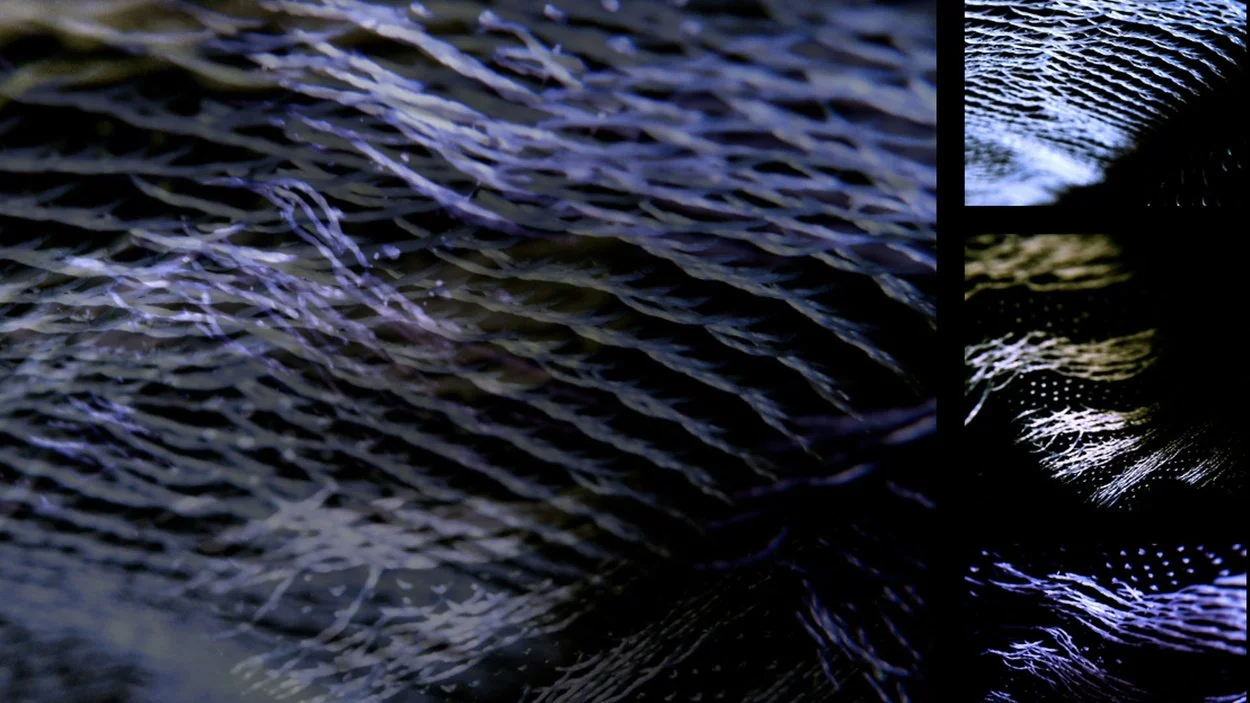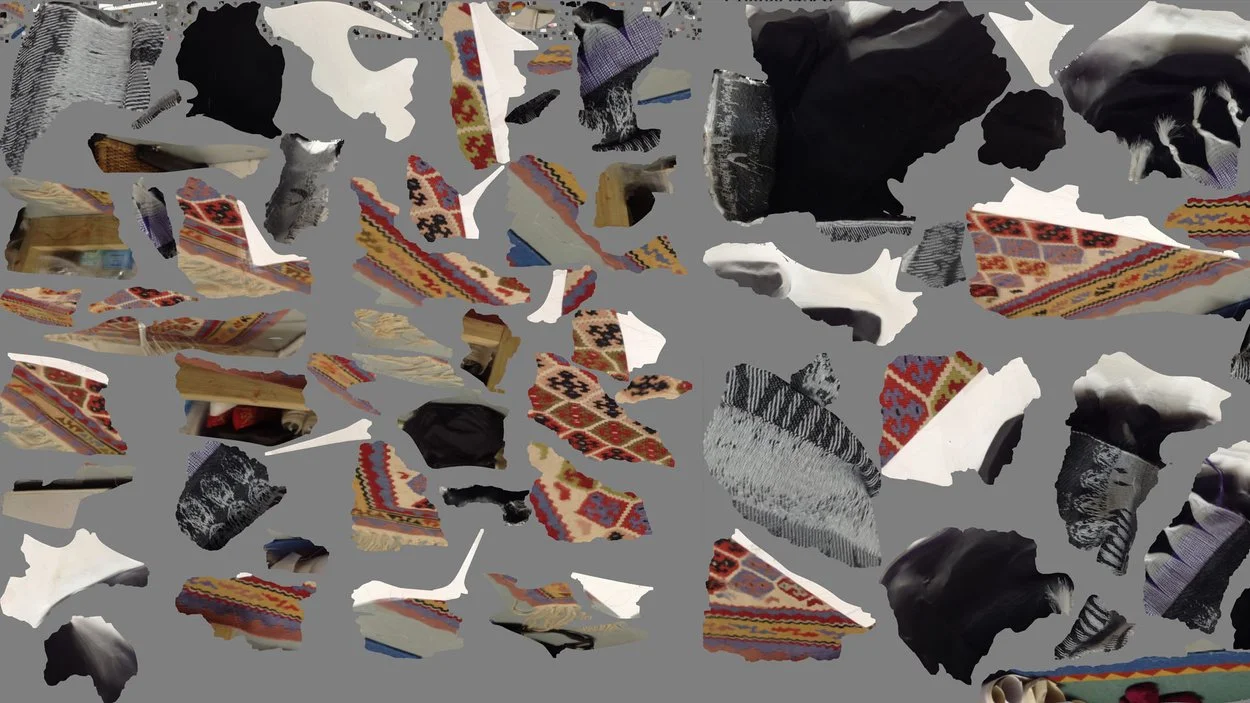Chroma
Video (Triptych) • Digital Edition of 80, Series of 3
What does it mean to archive through light, texture, and machine logic?
CHROMA began as part of Staging the Archive, an exhibition curated by Antonio Castro for The Museum & Study Collection at Central Saint Martins. The exhibition challenged traditional modes of display and memory by excluding original objects entirely — instead presenting reinterpretations and digital provocations derived from the archive.
My contribution, CHROMA, was inspired by the woven reproductions of textile artist Zengke Jin. Rather than replicate the original forms, I explored how their materiality — their texture, gesture, and weight — might live on in a new medium.
This involved deconstructing each weave through principles of form, tactility, and surface distortion, using a custom blend of technologies: photogrammetry, macro photography, and generative processing.
Each CHROMA is a digital artefact that meditates on memory and material: not as preservation, but as re-authoring. The result is a triptych of animated textures — layered, looped, and encoded with new temporal life.
Exhibition
Staging the Archive, The Museum & Study Collection
Central Saint Martins, London, UK
Curated by Antonio Castro, BA Textiles
Includes Artist Talk & Roundtable at CSM






technology
The tools themselves shaped the direction of the work:
Photogrammetry translated the physical weave into dimensional form, allowing the object to inhabit a new virtual terrain.
Macro photography captured the material as a fixed, intimate moment — flattened yet richly textured.
Generative coding introduced logic-based variation, displacing thread with motion and gesture with signal.
process
Each woven reproduction in CHROMA was approached through a process of deconstruction — attending to its material language of form, texture, and tactility — as a way of investigating its digital potential. The project functions as an inquiry into how traditional craft can be reimagined through algorithmic abstraction and sensory design.
output
The resulting triptych reflects a deliberate juxtaposition: the instantaneity of digital rendering set against the slowness of weave. Rather than replication, CHROMA proposes a form of digital materiality — a sensory architecture built from light, data, and displacement.
CHROMA was available as a limited digital edition (80) via Ascribe, accompanied by a digitally signed certificate of authenticity and registered copyright ownership.
Reflection
CHROMA explores how we might translate material heritage through contemporary systems — not to replicate, but to reflect. In this way, light, algorithm, and lens become co-authors in a layered act of reinterpretation.
The project continues my broader interest in sensory systems and the “in-between” — where tradition and digital presence fold into each other, generating new ways of seeing and remembering.



